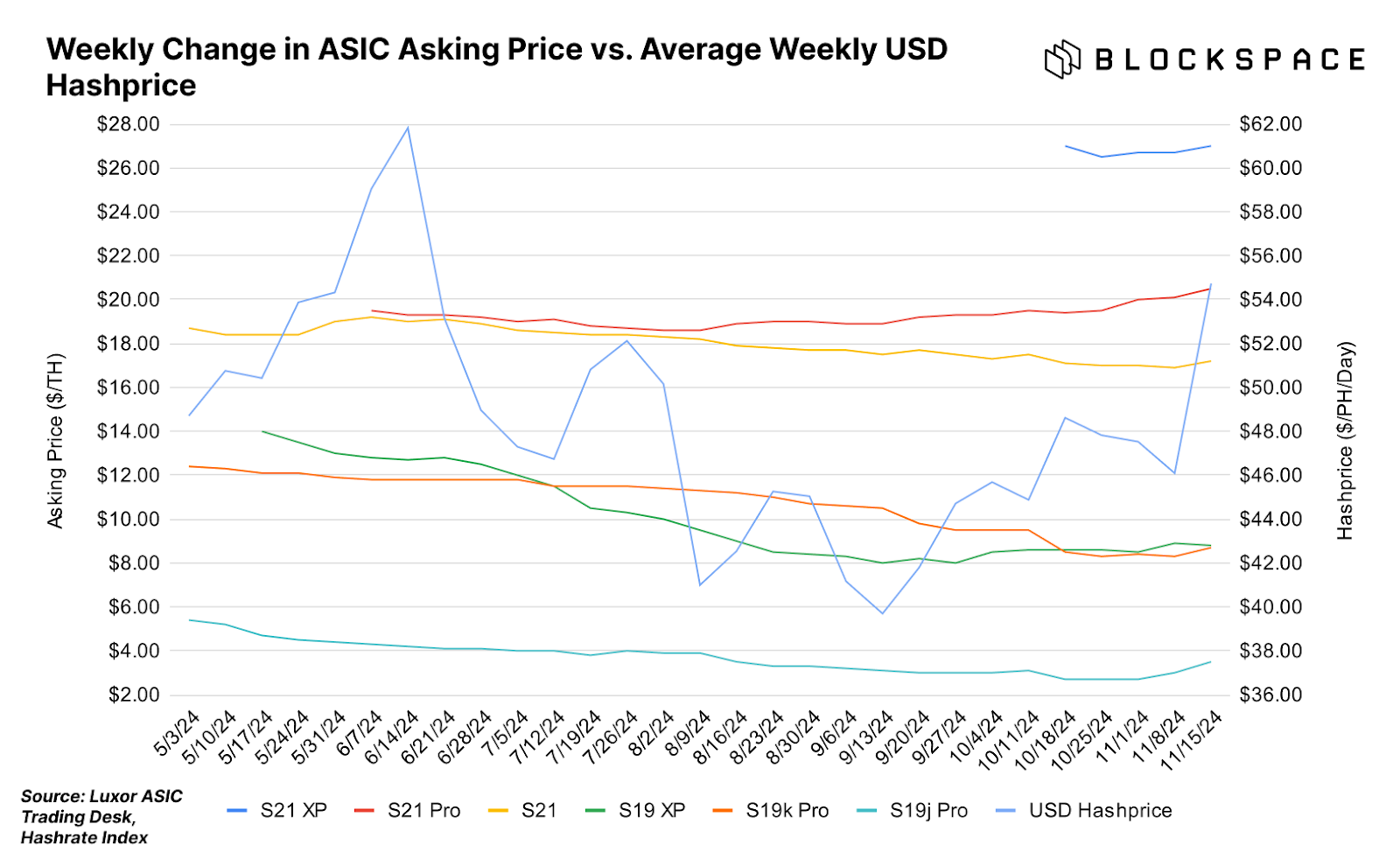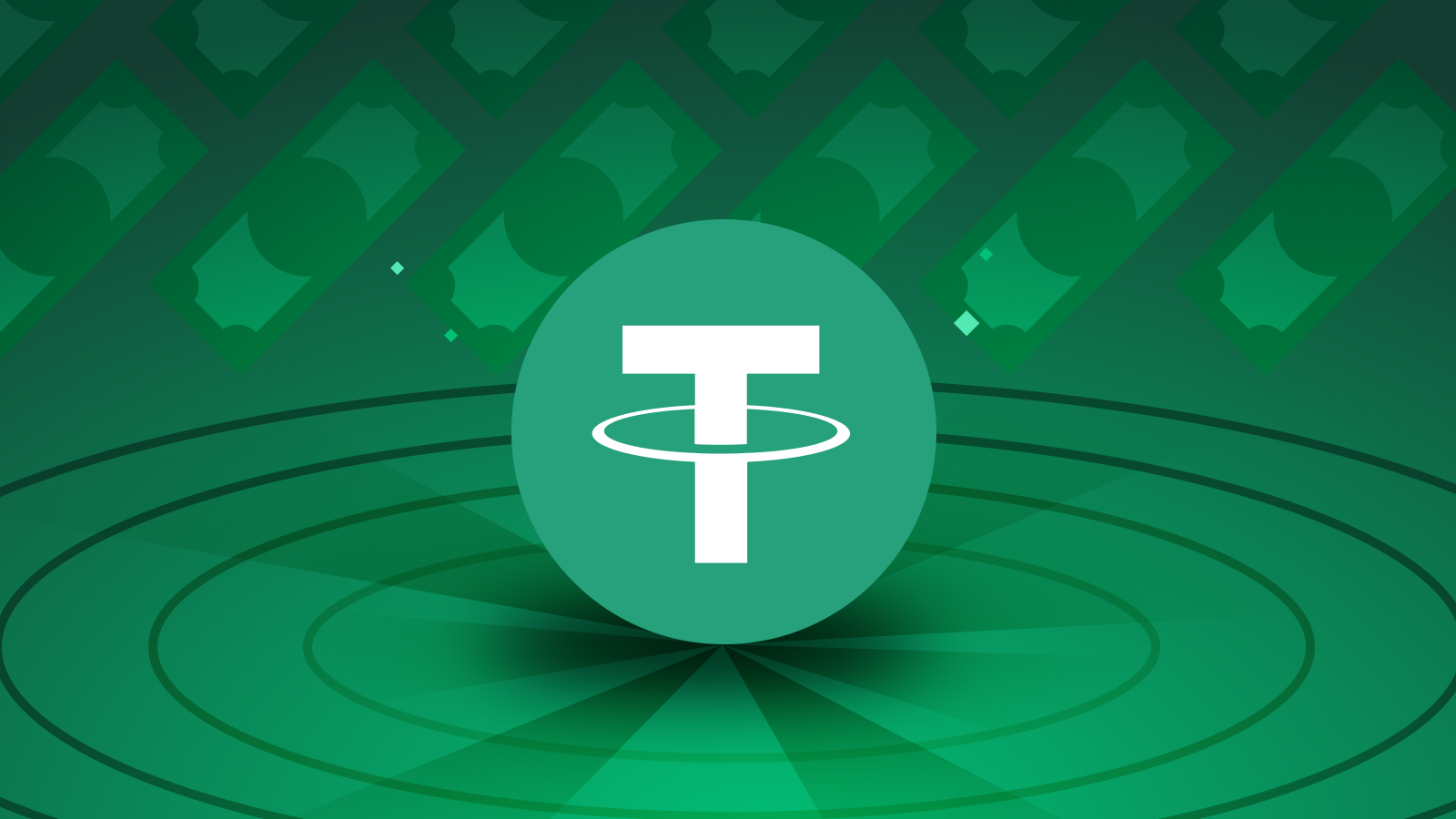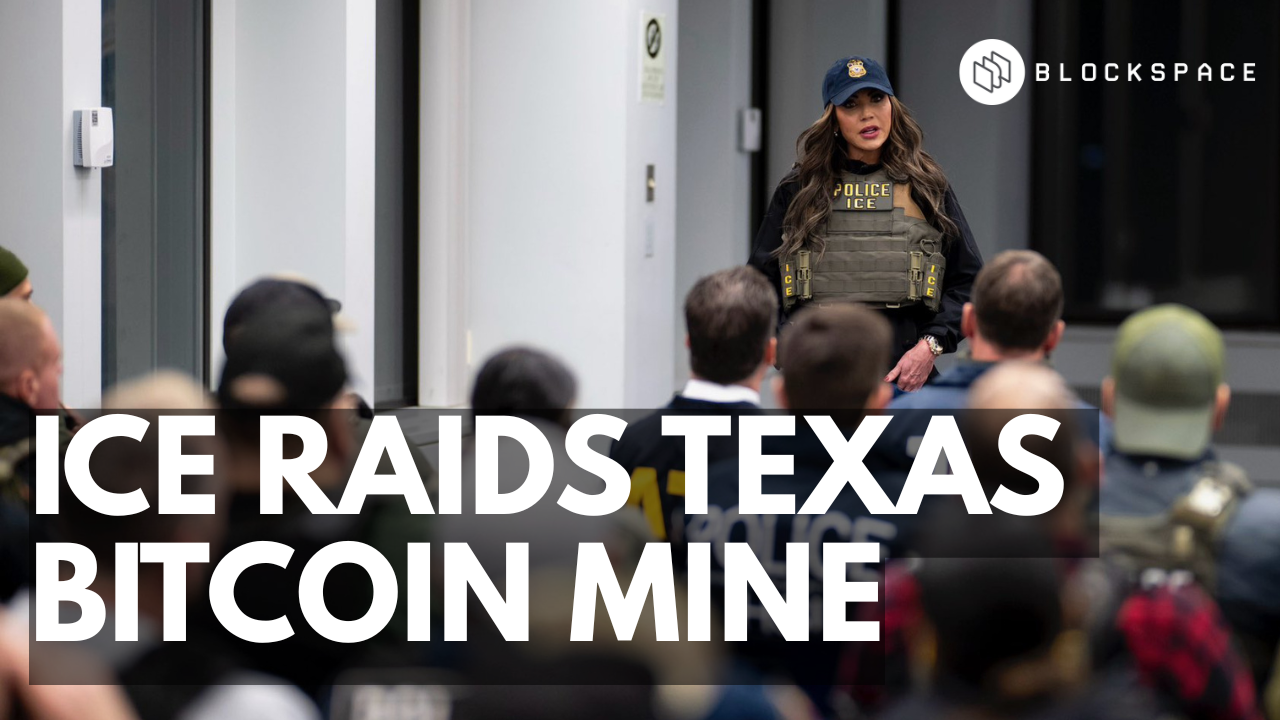Bitcoin is gigamooning, but y’all don’t need me to tell you that – the news is blazoned on the feed of every bitcoin-adjacent X account, and it’s making headlines across traditional, financial, and crypto media. The market froth is spilling over into everything in Bitcoin’s orbit, from memecoins, to Runes & Ordinals, to bitcoin mining stocks, and any and everything else.
Of course, bitcoin miners are feeling the love more than most. But not necessarily from a point of excess exuberance as much as a sense of relief.
Bitcoin’s price rise ended a months-long drought for hashprice, which has essentially traded in a channel between its daily average all-time low of $37/PH/day and $50/PH/day for the majority of days since the Fourth Halving on April 19. Now, hashprice is just above $60/PH/day, which isn’t stellar – especially when you realize that it’s just above last cycle’s all-time low – but it’s the difference between struggling for survival and subsisting.
With hashprice revived, the ASIC market is showing signs of life, too. Prices for the latest generation ASICs have soared on the black of bitcoin’s rally, as have prices for older models that would have been declared useless just a month ago.
Demand surges for S21 series; S19j Pro rises from the dead
In the ASIC market, the biggest winner of bitcoin’s price pop – as ever – is Bitmain.
Lauren Lin, the director of ASIC trading at Luxor, said that demand for ASICs has highly increased since bitcoin broke its all-time high, flipping from a “buyer’s market [to a] seller’s market overnight.” Of all the ASIC models, the “S21 Pro…drives the highest demand” on Luxor’s ASIC Trading Desk, she said. Alex Dischinger, a sales rep at Kaboomracks, corroborated Lin’s commentary, telling Blockspace that “pricing on 21 series is screaming up.” Blake Davis, an account executive at Blockware, told us that “most of [his] clients are focused on next-generation S21 series machines, particularly the S21 XP and S21 Pro,” the latter of which he called “the sweet spot” for price and performance.

Month-over-month, asking prices for the S21, S21 Pro, and S21 XP have respectively increased 1%, 5%, and 2%, according to Luxor Trading Desk data. Per Kaboomracks data, asking prices for the S21, S21 Pro, and S21 XP respectively increased 5%, 11%, and 5% month-over-month. Davis said that next-generation hardware prices have moved roughly 10-15% from bitcoin’s 35% move over the last month.
Davis expects the S21 series “to see significant increases in [price] across the intermediate term.” He claimed that Bitmain is already running low on supply for these models already, as are secondary suppliers.
Turning to older units, Lin said that the S19j Pro is seeing significant demand on Luxor’s ASIC Trading Desk and a price increase to match it (the S19j Pro increased 30% month-over-month according to Luxor data). Dischinger said that Kaboomracks hasn’t seen the increase in pricing to the S19j Pro that Lin observed, noting that the S19 series as a whole is “still at rock bottom” and that inventory is “not moving.” Davis said that “older-gen machines haven’t seen much change in pricing” on their end as “there is a lot of supply out there on used hardware.”
For used equipment like the S19 series, Lin clarified that, even as trading activity for these ASICs is higher than before bitcoin’s price run, that “miners with large old-gen inventory are holding off selling during the volatile market.”
Dischinger said that he expects the price of the S19 series to increase exponentially alongside bitcoin, so much so that, if they sold for $3,000 a unit later on the bull market, he wouldn’t be surprised.
Any love for Whatsminer? (And other trends)
While demand for Antminers is universal, there’s conflicting evidence for hardware from its primary rival.
Dischinger said that MicroBT’s Whatsminer series “is completely irrelevant right now” and that “they haven’t been competitive in pricing or efficiency in the entire bear market.” He chalked up this deficiency in part to the M50 series, deriding it as a “flop,” but he said that the “M60 series is better.” Contrarily, Lin said that there are “whale buyers” for the Whatsminer series, adding that Luxor sold over 20,000 units in the month of October, ~90% of which were M60 series ASICs.
It’s hard to square the discrepancy of demand between Luxor and Kaboomracks. But for his part, Dischinger said that “the cost per terahash is so much better” for Antminers, and he added that replacement parts are as much as half the price for these ASICs compared to Whatsminers and that the markets for these parts are much more liquid.
Looking beyond the bitcoin mining ASIC market, DOGE’s customary bull market rally – driven ever higher by Elon Musk’s perpetual endorsement, not to mention the fact that the acronym for his forthcoming Department of Government Efficiency mirrors the coin’s ticker – is driving demand for Scrypt ASIC miners. These machines are “mooning” in a trend that “will probably continue,” according to Dischinger. The price of the Antminer L9, which was released this May, is “nearing $20,000,” he added, while the price of an L7, released in November 2021, is roughly $10,000.
Where are the ASIC buyers coming from?
As we’ve come to expect since the China Mining Ban, the majority of ASIC miner demand is coming from the US.
Specifically, Dischinger said that Kaboomracks is seeing the most activity from the seat of its headquarters, Texas. “Seems like the majority of hash is still deploying” in the state, he said, adding that they are also seeing increasing activity in North Dakota and Wyoming, specifically from miners operating on oil and gas wells.
Lin said that the majority of Luxor’s volume, per usual, is flowing from the US. But she also said that Luxor’s vendor partners are seeing substantial volume from Russia, a market that Luxor cannot access due to US sanctions.
Russia features perhaps the second greatest demand for ASIC miners, and in such a way that is “complementary” to the US, Lin said. Russia miners are buying up the majority of Antminer T21s on the market, according to Luxor’s partner vendors; the T21 is scarcely traded in the US, she added.
As Blockspace reported in October, Russia likely houses the second or third greatest share of Bitcoin’s hashrate, although there’s no way to put a hard number on the figure. Per anecdotal evidence and the trading volumes that Luxor’s partner vendors are seeing, the country’s miners have been ramping up their hashrate in the oil and gas rich country.




